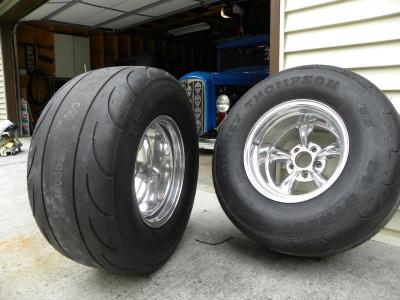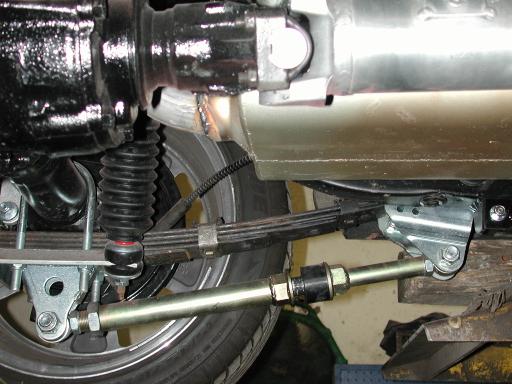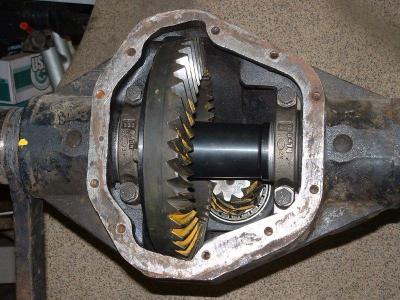While some love to carve up mountain roads, and others relish the challenge of perfectly apexing every corner at the track, many crave a different challenge. Drag racing is a sport all about timing, finesse, and brute power. Like any other discipline in motorsport, to compete you’ll need a vehicle finely honed for the task at hand. Here’s how you go about getting started on your first quarter-mile monster.
It’s All About Power, Right?
It’s true that if you want to go faster, having more power on tap is a great way to do it. If that’s what you’re looking for, we’ve covered that topic in detail – for both the naturally aspirated and forced induction fans. However, anyone that’s been to the drag strip before will tell you that’s only part of the story. All of the power in the world isn’t worth jack if you can’t get it down to the ground. Even if you can, you’ve still got to keep your steering wheels planted if you intend to keep your nose out of the wall. So, if you want more power, consider the articles linked above. For everything else that’s important in drag racing, read on below.
A Special Kind Of Rubber

As in all motorsports, tyres are key to your success at the drag strip. The economy rubber on your grandma’s hand-me-down grocery getter will get you through a run-what-you-brung night for newbies, but if you’re serious, it’s the first thing you’re going to have to change. It’s almost never worth spending money on other modifications if you don’t have a good set of tyres, because your tyres are what connects your car to the track surface. If they don’t hook up, you’re not going anywhere.
For ultimate performance, you’ll want a dedicated set of drag slicks. These have a completely smooth tread for the maximum contact area with the ground. However, if you’re just starting out, these track-only tyres are probably overkill, and are often disallowed from most streetcar classes. For the beginner, getting a set of DOT-approved drag radials is more common. Legal for road use, they let you fit the wheels in your garage and drive to the track, and ideally drive back home again, too. Made of sticky rubber and with a tread pattern that aims to optimise performance while still meeting the letter of the law, it’s not recommended to drive around on these on a daily basis. Having a second set of wheels with your drag tyres on can be helpful if you’re regularly using the car on the street.
To get the most out of your tyres, follow the manufacturer’s recommendations for use, particularly in the areas of tyre pressure and warmup regime. Many people head out to the strip and insist on doing a big, smoky burnout before every run. As fun as this is, it’s not the best way to get good performance and life out of your tyres. Often, care and consistency is the key to unlocking fast times.
Staying Planted

With a good set of tyres and plenty of power under the hood, you’re well on the way to reducing your ET (elapsed time). There’s more that can be done, however. Improving suspension setup can help the car launch harder, and enable it to put power down more reliably with less wheelspin.
Of course, the mods available depend on the suspension design of your particular vehicle. Those with a traditional American muscle car with a solid rear axle will look towards devices like traction bars to help keep the rear wheels planted, while experimenting with pinion angle and preload to help further. A set of double-adjustable shocks are also a popular upgrade which are also applicable for vehicles with independent rear suspension, allowing rebound and compression to be tuned for the best possible hook-up off the line. Front-wheel drive and all-wheel drive cars will want adjustable shocks too, though settings will be different from the more typical rear-wheel drive drag cars. Weight distribution also plays a major role. Many racers go so far as relocating batteries, intercoolers and even radiators to put more weight over the driven wheels.
Weight Reduction

Basic physics tells us that acceleration is proportional to force divided by mass. Reduce the mass, and you’ll increase the rate of acceleration. On a basic level, this is as simple as removing unnecessary weight from the car. Things like passenger seats, carpets, door trims, radios, and air conditioning systems can all be removed to shed pounds. At the more extreme level, one can go so far as hacking off the roof and removing doors, but most competitors have more conservative limits.
Other areas where weight can be saved are less obvious, but no less important. Drag cars need to stop, but generally only hit the brakes at the end of a run before a long cooldown period. Special drag racing brake kits are available that shave pounds off stock parts. Steering is also not a major concern, so skinny wheels on the non-driven wheels are a popular mod, too.
Nitrous, a.k.a NAWWWSSSSS

Building an engine with stout internals is an expensive, time consuming exercise, and even the cheapest eBay turbo kits take a lot of work to install. Thankfully, there’s a cheaper alternative to these difficult endeavours, and it comes in bottle! Nitrous oxide is a powerful oxidizing agent, and thus by injecting it in to your engine, you can also add more fuel, and make a bunch more power.
It’s a cheap and easy way to add 50 to 100 horsepower. Installation is typically fairly easy, with wet systems requiring a bottle install, along with a pair of nozzles to inject nitrous oxide and fuel into the intake of your engine. This gives you that classic red-button power boost made so famous by The Fast and the Furious. However, it does come at the risk of causing catastrophic engine damage, due to the sudden increase in cylinder pressures when the system is fired. Even if your engine holds up, you might find you quickly burn up a clutch or transmission as a result of the extra torque output. Doing your research on how nitrous effects your car is key to avoiding blowing a motor in front of a jeering crowd at the drag strip.
Transmission

An often-overlooked part of the car when it comes to drag racing is the transmission. If you’re running an automatic transmission, swapping in a torque converter with the optimum stall speed can help you launch the car harder without stumbling off the line. Swapping in a ratcheting shifter is also a popular mod, allowing the car to be slammed through the gears without accidentally missing a shift or dropping into neutral. For manual-equipped cars, fitting a suitable clutch that can handle high-power launches will help. You’ll also want to consider a spool or locking differential, to ensure you’re putting power down equally to your driven wheels.
Outside of the transmission itself, changing the final drive ratio can help the car accelerate faster and stay in its powerband longer. The final drive ratio is affected by tyre diameter as well as the differential gearing; changing either one will have an effect on how the car performs. A lower gear ratio, achieved by swapping to a differential with a higher numerical ratio or fitting smaller tyres, will allow the car to accelerate quicker. However, go too low, and you’ll be changing gears too often, costing time. A higher gear ratio, achieved by fitting larger tyres or swapping to a diff with a lower numerical ratio, can allow the car to go faster in each gear, but will accelerate slower. Getting the ratio just right is key to nailing the fastest possible ET.
Summary
Drag racing is a sport of optimisation. After a few runs, you’ll quickly start to identify weaknesses in your car and your own technique. By picking an area to work on, you’ll be able to find some time in the quarter-mile and also build consistency. Often, fixing one area will then lead to identifying further areas of weakness, and you and your car can develop over time. Pay attention to each run, and don’t be afraid to ask questions and learn from others along the way. You’ll pick up a lot just from observing others at the track and finding out what works and what doesn’t. Stay safe out there, wear your helmet, and of course, happy hacking!

















I like these! Always thought it would be fun to have a car mechanic bootcamp like course similar to the coding bootcamps but you bring a car in and they teach you how to take it apart and upgrade it or whatever. I don’t know enough about cars but I would sign up for one for a few thousand bucks
Broken python code won’t do any harm, car serviced by mechanic without government-approved certificate may cause death or serious injury to other commuters. Do you want that kind of liability from your “car tinkering bootcamp”?
Bullshit, I’ve seen more dangerous crap come out of licensed shops, than from someone that actually cares about their own neck. Mechanics that are both competent and honest are in the low percentages.
– Completely agreed. And a good chance the mech. may have may have a manager pushing them to get it done fast and cheap for better margin, if they even care to do a good job in the first place.
I would rather see a vehicle on the road that was serviced by a backyard mechanic than one that had no service. People generally don’t stop driving when something is wrong and can’t afford to get it fixed.
The first stop on modifying your car is a forum for your specific car. It’s not very likely that you’ll be designing your own hardware and programming your own software. For the time and effort you’d waste, you can buy a plug and play unit that gives you complete control. You might flash a base tune, something that worked on someone else’s car… to get you to the dyno shop where it can be tuned on a dyno professionally. If you’re that worried… don’t do it, or install your own kill switch, or know what you’re doing in the first place. You can always find an auto tech school, take some classes for your own knowledge. Don’t stand on the side if you want to learn, get in there and get dirty. When I went, you could bring in your own car for something if it relates to what the class is working on. Have a “plan B ride” if it’s transmission or engine related.
That transmission sure looks a lot like a differential. But what do I know?
You’ve never heard of a transaxle?
B^)
Is it legal in drag racing rules, to include a SRB? Or five?
No, but there was a time when you could add a Turbonique axle. It was essentially a new differential that allowed input from the driveshaft but also included a turbine spun by the exhaust from a rocket combustion chamber. You could get them up to about 1000hp.
Had to google Turbonique axle. From the wiki article “Being based on rocket fuel and technology, there were a number of safety issues with these devices. For instance if the operator let off the throttle, then reapplied it, the device would essentially become a bomb.” :p Excellent. Sounds like a blast.
Throttle is a very generous term for these units. It was much more binary then what you are thinking. So picture pushing a button and adding 1000hp to the drive axle. Instant wheelspin for days.
That Sentra still has a nice, comfy driver’s seat.
What about lockers and autolockers or LSDs?
Nice article, good work!
I suggest not using LSDs for traveling far,
it could end up being a “bad trip”!
B^)
Yeah I find it curious to leave that out? You want good tires first and an LSD second… anything else and you’re just spinning your wheels. I find these “how to mod your car” posts on hackaday interesting but woefully incomplete and ultimately not very useful for a beginner.
I just noticed they did mention a “spool or locker” differential. I think it deserves more than a passing mention but it IS in there.
Do any of you know if the “sticky” rubber for racing is the same used in Winter t[iy]res?
No. Of course it’s going to be similar on some level but race tires are generally designed to grip as much as humanly possible (while still being able to hold up to the racing event) and any street tire needs to have some longevity… it’s always a trade-off but you’re looking at two ends of a spectrum. The closest street tire you’re going to find is a summer performance tire. There are some “gray area” tires but you have to go looking for them. I have a set of race tires that are barely barely barely street legal and I don’t drive on them every day because they aren’t going to last long.
However, winter tyres did have a rep as “poor mans slicks” at the tracks in the past. Guys would put them on and claim better traction because they could burn them sticky due to softer rubber.